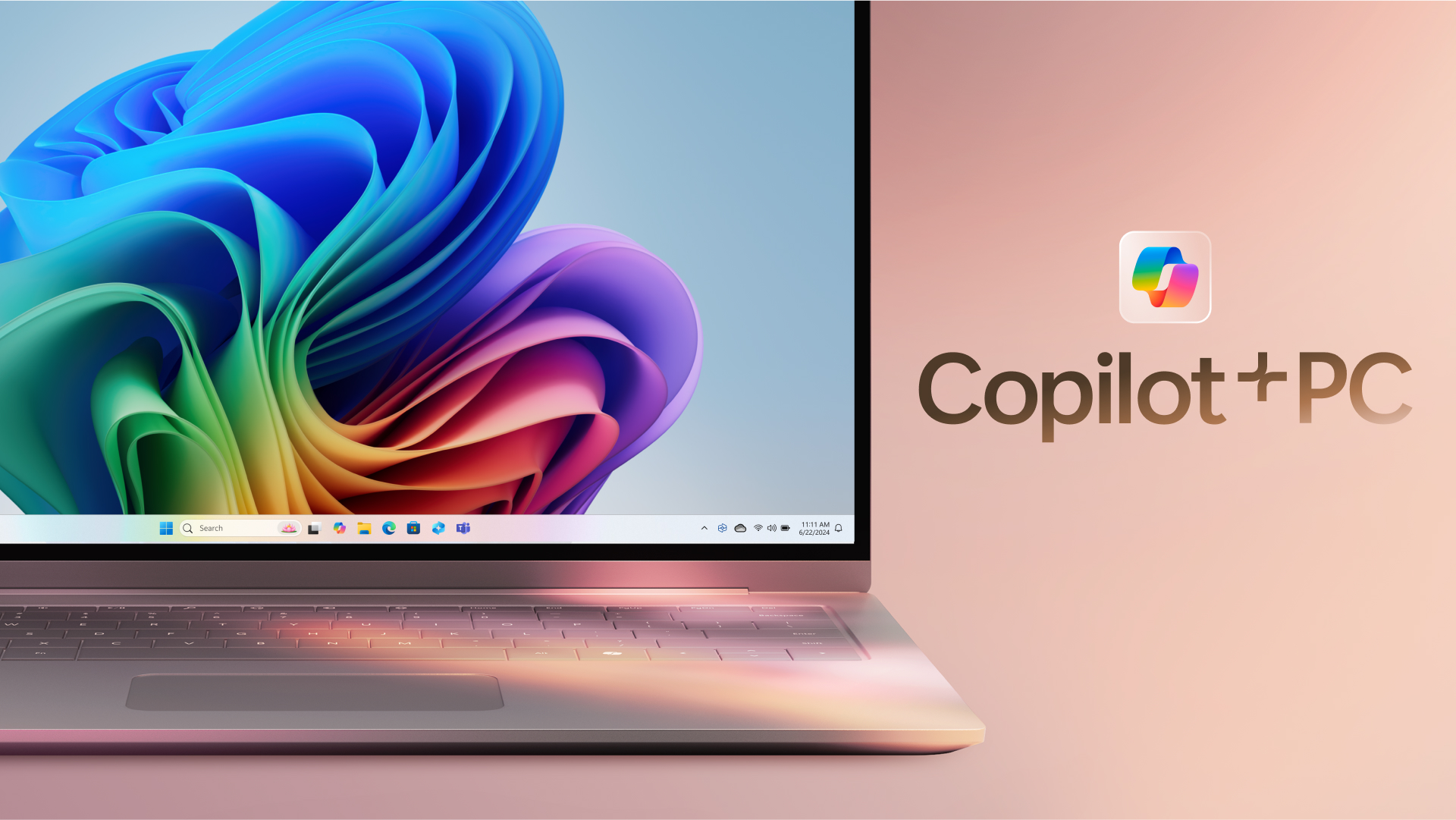Microsoftannounced a bold new direction for its laptops, based primarily on enabling bleeding-edge AI features that require a Neural Processing Unit (NPU).Copilot+ PCsare Microsoft’s new badge for approved AI-ready PCs, which so far is limited to only laptops withQualcomm Snapdragon X processors. Those laptops aren’t available just yet, but there are plenty of them coming soon.Efficiency, value, and a shiny new button on the keyboard are Microsoft’s hallmarks for this new wave of computing. It’s an effort to make AI PCs a real, substantive endeavor, and to give Windows on Arm its day in the sun. As previously rumored, Microsoft is putting itsCopilot AI on computers locally. Here’s everything we know from Microsoft’s Copilot+ PC press conference and all that’s come before.
Copilot+ PCs at a Glance
Copilot+ PC Specifications
To be considered a Copilot+ PC, a PC must have at least 16GB RAM, 256GB storage, and crucially an on-board NPU that’s capable of 40 TOPS (trillions of operations per second, typically 8-bit integer instructions). NPUs are a different type of computing core that’s separate from CPUs and GPUs. They’re based exclusively around performing AI computations more efficiently than GPUs.Microsoft is also focusing exclusively on laptops with the Copilot+ PC branding. NPUs are a key part of the Copilot+ PC identity, and no desktop processors containing NPUs yet exist. Microsoft has said in the past that its 40 TOPS performance level must be met on an NPU rather than with a GPU for the efficiency and power-savings on laptops, and declined to mention desktops in any way at its initial press conference, so Copilot+ is only for laptops now.It’s a bit of a curious decision, as it effectively restricts all of these features to new and future laptops. Nvidia’s RTX 4050 laptop GPU might be more for graphics workloads like running games, but it’s also a fairly potent AI processor. Depending on power, clock speeds, and whether or not sparse operations are used, the RTX 4050 provides anywhere from ~47 to ~194 TOPS of computational power. More potent GPUs like the RTX 4090 laptop GPU can provide up to 800 TOPS of compute. But sorry, Nvidia, none of those qualify for Copilot+ because they’re not NPUs.For now, the only mobile processor on the market with an NPU fast enough to meet Microsoft’s muster is theSnapdragon X Elite and Plus, releasing for the first time in Copilot+ PCs. The Snapdragon X chips are built on Qualcomm’s new Oryon cores and promise elite performance. Snapdragon X Elite will have 12 cores running up to 3.8 GHz, or up to 4.3 GHz using single- and dual-core boost. The Snapdragon X Plus has a 10-core CPU, running at up to 3.4 GHz on all cores. The GPU is a Qualcomm Adreno that promises up to 4.6 TFLOPS of FP32 compute, and the NPU, dubbed Hexagon, is rated for 45 TOPS.Microsoft CEO Satya Nadella claimed that the first wave of Copilot+ PCs with Snapdragon X Elite are 58 percent faster than Apple’s new MacBook Air with M3 processor. But of course, as is often the case with these kinds of claims, specific details about where and how these PCs are faster than MacBooks are lacking. We’ve seen software optimizations more than double performance for certain AI-based tasks over the past year as well, so a tuned application running on one NPU versus an untuned implementation on a different NPU could make for questionable comparisons.
Coplilot+ PCs powered by Qualcomm, Intel, and AMD
All first-wave Copilot+ PCs will launch with Snapdragon X Elite or X Plus inside, notable because of their uniqueness as Arm processors. Qualcomm’s closest current competition isAMD’s Ryzen Hawk Point platform, with its NPU sporting 16 TOPS of compute, andIntel’s Meteor Lake NPUrunning 10 TOPS. That means neither company currently offers a processor that can be branded as Copilot+ capable.Microsoft has left its two largest processor partners in the dust with Copilot+’s first-wave, but its event made it clear that both Intel and AMD have x86 processors in the pipeline that will exceed the 40 TOPS benchmark and join the Copilot+ family in the future. AMD will haveZen 5 Strix Point processorsin the coming months, andIntel will launch Lunar Lake CPUs this fall. In the meantime, Windows seems to be moving away from x86 and toward Arm64-based processors.The Arm instruction set architecture (ISA) hasn’t had the greatest history of support with Windows prior to now. Early attempts to get Windows running on Arm with theSurface RTcost Microsoftlarge amounts of money, though more recent ventures with Windows on Arm have seemingly beenmore successful. But the Windows team has seemingly made significant efforts in recent months in preparation for the Snapdragon X.Arm is also the instruction set used for Apple’sM-series silicon, and is preferred by many over x86 — the ISA that all Intel and AMD consumer processors run. Arm chip designs have focused intensely on portable computing over the years as previously they were the primary choice for smartphones and tablets. The gap between Arm and x86 has narrowed in recent years, both in terms of Arm performance and x86 efficiency, but this will be the first true proof of how competitive Arm devices can be with x86 alternatives.Qualcomm is currently the biggest and only name in Windows on Arm computers, but this is due to change soon. Arm execs declared thatmultiple vendorsare making chips for desktop and laptop PCs in the wake of Qualcomm’s trailblazing efforts. Whether those will prove equally viable remains to be seen, but it’s a brave new world for Windows PCs.
Copilot+ PC Laptops
At launch, seven manufacturers will release Copilot+ PCs, including Microsoft itself. The laptops start at between $999 to $1,699, depending on the vendor, with some models that can stretch to $2,499 and beyond. Most will launch on July 21, 2025, though some of the first wave of laptops may come a bit later. Here’s a rundown of the various models and brands.
Copilot+ PC Unique Features
Copilot+ PCs have a few new tricks on offer to set them apart as AI PCs. Their primary accomplishment is running Microsoft’s Copilot AI assistant locally — all other currently available PCs with Copilot run it via the cloud. The AI is activated with theCopilot key, which can only be re-mapped with third-party programs. Copilot+ brings with it a host of interesting features, includingRecalland Cocreate.Recall is a snapshot feature for Copilot+ PCs that remembers your work as you go, taking snapshots of applications and screens and remembering everything you’ve seen in case you forget where you saw it. Users can scrub on a timeline of the PC’s recorded history, or search for keywords to find lost information or files. For safety,Recallcan be disabled or paused for certain applications and programs, but likely not disabled completely as it’s integrated into the OS on Copilot+ devices.Cocreate is an AI imaging tool that attempts to AI-upgrade your art as you draw it, with varying levels of “imagination.” From subtly adding shadows or reflections to a beach scene drawn in Paint, to fully Van Gogh-ifying your hand-drawn giraffe, Cocreate attempts to help out artists or artist-wannabes. With much fervor around AI art in particular, adding this tool is an interesting statement by Microsoft.Windows Studio Effects is a series of webcam filters that allow you to blur your background or add special effects to any program that accesses your camera. This is not unlike Nvidia Broadcast or XSplit Vcam — except it will leverage your laptop NPU to do the heavy lifting.Microsoft also showed off new updates to Live Captions, which allows it to translate live, attempting to one-up OpenAI’s latestGPT-4o updateand its live vocal translation. Creative apps including Adobe’s Creative Cloud suite and DaVinci Resolve are including built-in AI upgrades that Copilot+ can use. And of course, the Copilot tool provides AI-powered web searches, AI-powered file searches, and other such tools which we’ve previouslyoutlined here.We’ll update this page once we learn more about Copilot+ PCs and get more hands-on time with their new features. Whether this is going to revolutionize the portable PC world the way Microsoft and Qualcomm hope is still up for debate. But either way, this is clearly one of the biggest shakeups in the Windows world in the last several years.
MORE:Qualcomm Snapdragon X Elite and X Plus: All We Know

MORE:Microsoft May 2024 Copilot+ PC announcement live blog
Get Tom’s Hardware’s best news and in-depth reviews, straight to your inbox.

Sunny Grimm is a contributing writer for Tom’s Hardware. He has been building and breaking computers since 2017, serving as the resident youngster at Tom’s. From APUs to RGB, Sunny has a handle on all the latest tech news.